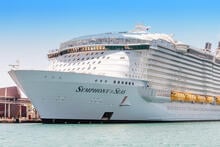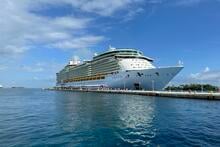I’ve taken enough cruises to discover that my body is susceptible to seasickness.
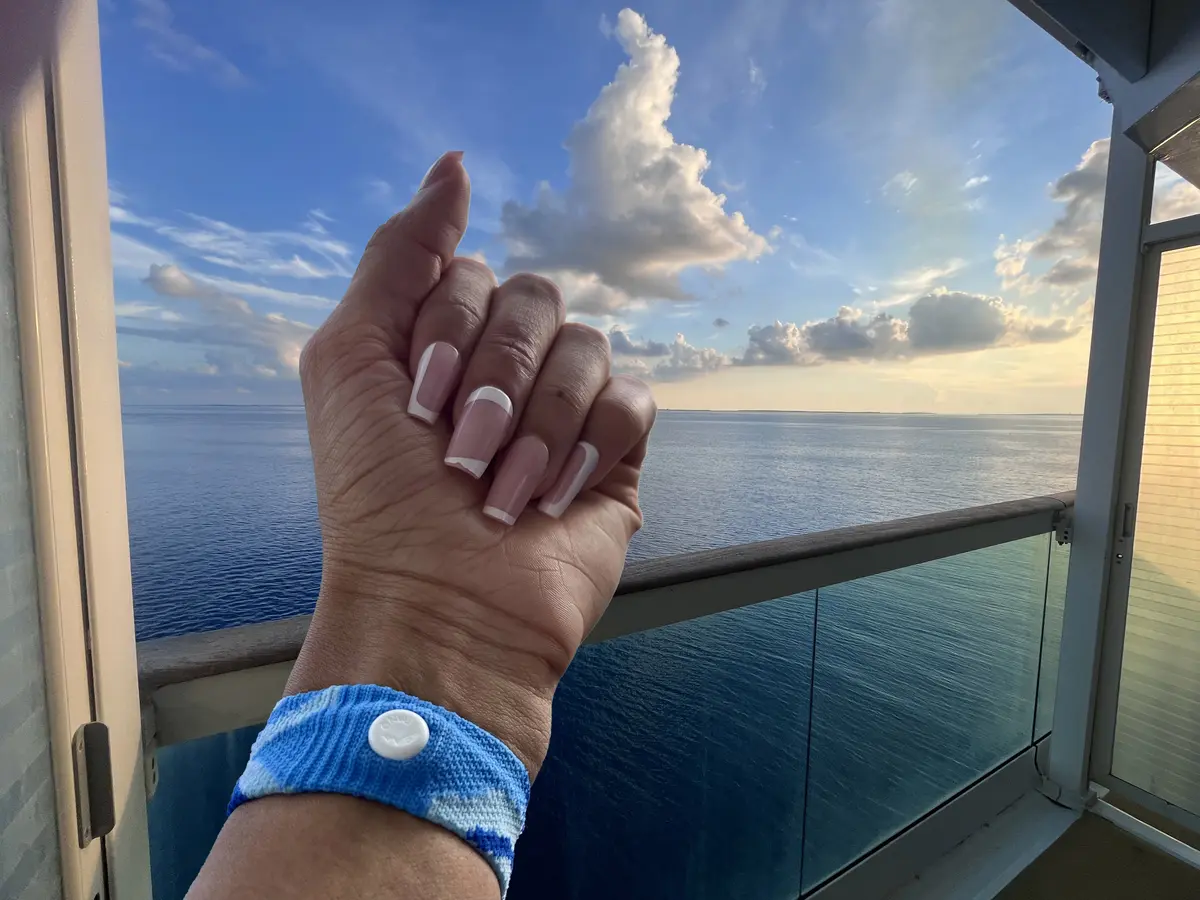
When motion sickness takes over, I start struggling with nausea, dizziness, and sometimes a headache.
I’ll never forget the moment I discovered I struggled from seasickness on a cruise ship.
It was night one of my first cruise on Wonder of the Seas, and I was introducing myself to other cruisers at a Hyperlink event.
Suddenly, I started stumbling and feeling dizzy and nauseous. All my excitement about the event turned into a sickening feeling.
Thankfully, I brought Dramamine on that cruise and felt better when I was able to head to my cabin and take a pill.
But since that moment, I’ve always had to plan ahead to make sure I won’t feel seasick.

It’s always embarrassing to have to excuse myself from a nice Main Dining Room dinner, or miss out on activities because I’m feeling too sick to get up.
Cruising is such a fun, affordable, and worthwhile form of travel that I would hate to miss out on it just because of motion sickness.
If seasickness has you hesitating to get on a cruise ship, look no further! I went ahead and tried out the most commonly recommended seasickness hacks to find the best one.
What is seasickness?
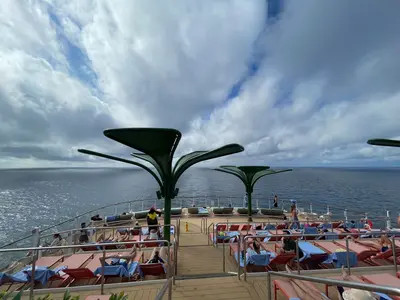
Those who experience motion sickness in cars, planes, or roller coasters are already familiar with the feeling of being seasick.
Seasickness is a form of motion sickness that occurs when there is a discrepancy between the motion of the ship, visual input, and the vestibular system in your inner ear. Essentially, the body’s balance mechanism becomes disoriented.
The rocking motion of the ship confuses your body’s senses into becoming imbalanced.
This imbalance leads to a range of symptoms, from dizziness to fatigue, headaches, irritability, loss of appetite, rapid breathing, nausea, cold sweats, and even vomiting.
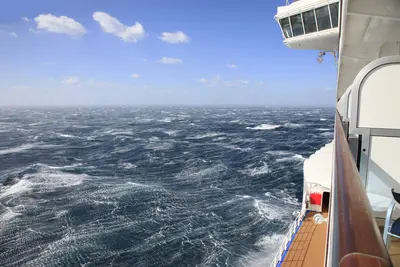
Not everyone is subject to motion sickness: women and children are more susceptible, and genetic markers can indicate those more likely to experience it. People who get migraines are also more likely to suffer from motion sickness.
If you’re more susceptible, you know the misery of it all too well: seasickness can turn an exciting cruise adventure into an uncomfortable ordeal.
Thankfully, cruise lines do their best to develop solutions for motion sickness.
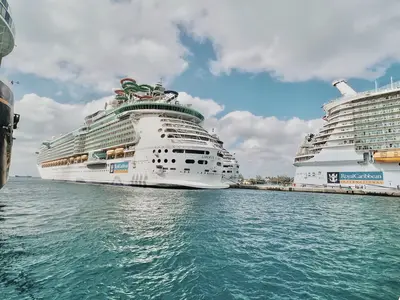
Modern ships are designed with stabilizers on the side of the ship to help counteract the sea’s motion. This results in less turbulence felt onboard.
The newer the cruise ship, the more advanced and effective the technology tends to be.
Skilled captains also make every effort to avoid rough seas and minimize any uncomfortable sailing conditions.
These reductions, however, don’t eliminate the misery of seasickness entirely.
Choosing the right stateroom
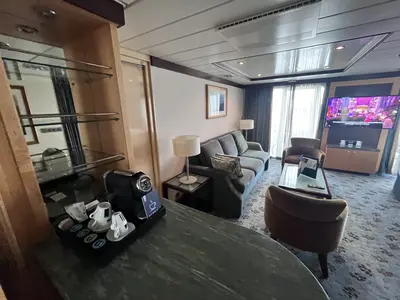
For my 3-Night Allure of the Seas cruise, I decided to try all the recommended hacks for seasickness.
I started out by booking a better stateroom. For this cruise, I booked a Grand Suite stateroom located towards the middle of the ship.
Grand Suites come with a large balcony space, which I knew I could use to get fresh air and watch the horizon. These hacks help reorient your body and improve nausea.
Windowless inside cabins, which I usually stay in, are cheaper but end up being confined spaces that exacerbate nausea.
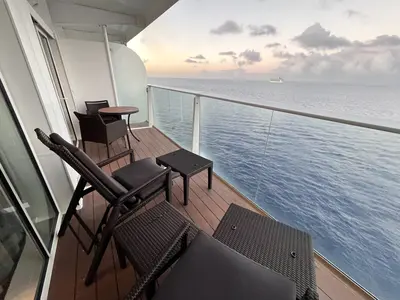
Staterooms located in the middle of the ship are also better locations if you’re prone to seasickness. Areas in the forward or back of the cruise ship are likely to feel more motion.
Experts also recommend that you stay on lower decks to avoid feeling the movement of the ship.
My room was located on the 10th floor, just between the middle and the back of the ship. It was close enough to the middle that I didn’t feel seasick while inside the room.
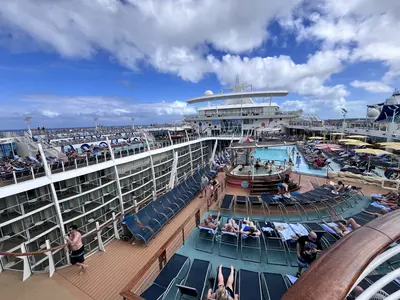
Being on a larger ship also helps; the size of a big ship like Allure minimizes the feeling of motion.
My rating: ★★★☆☆
Acupuncture pressure band
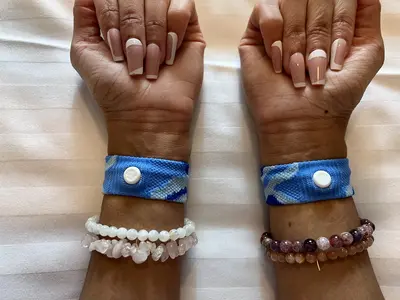
For Day 1 of the cruise, I decided to try acupuncture pressure bands.
I purchased a set of SeaBand bracelets and put them on once we got onboard.
These bands are designed to target pressure points on the wrist: two plastic pieces apply direct pressure to the P6 or Nei-Kuan point on either wrist.
Supposedly, this band stimulates your median nerve and interrupts the “I’m sick” messages your brain is sending your stomach.
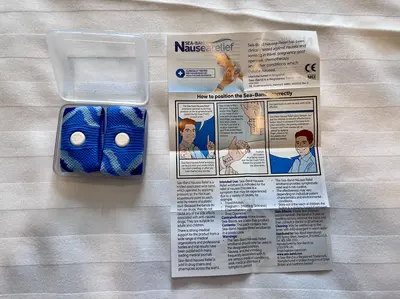
Scientific evidence on whether these bands actually work is inconclusive.
Some studies imply it works through a placebo effect, while others suggest there may be a real benefit.
Either way, many cruise fans report good results when they wear their bands for the length of the cruise.
This was my first time trying these bands, and I felt that it was hard to make them stay in exactly the right spot.
Since they work through pressure points, it seems important that they stay on the right pressure point. But I’m not an expert at finding them, and the bands are liable to slip off the right spot.
The instructions say that the SeaBand takes 2-5 minutes to become effective. I put them on once I got onboard, and the ship set sail in the early evening, around 5 P.M.
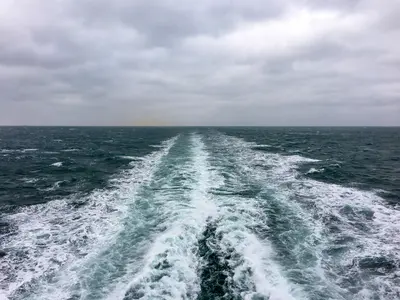
But around 6 P.M, I started to feel very seasick during dinner. I tried applying extra pressure to the plastic studs myself, and after about an hour the feeling improved.
I’m not sure if I started out putting the bands in the wrong spot, or if I just needed that extra pressure to feel better.
To provide context, when I would get seasick without trying any remedies, I felt like I would rate my sickness feeling at 7 out of 10.
With the bands on (and with me applying some additional pressure), I felt more like a 5 out of 10.
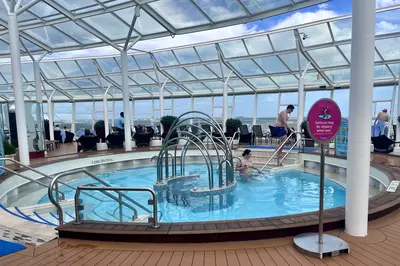
I also made the mistake of keeping the bands on when I got in the water and was annoyed at the damp feeling they left on my wrists.
Personally, I didn’t like that the bands were something I had to keep on at all times, and they only served to lessen my dizziness, rather than eliminate it entirely.
My rating: ★★☆☆☆
Over-the-counter medicine
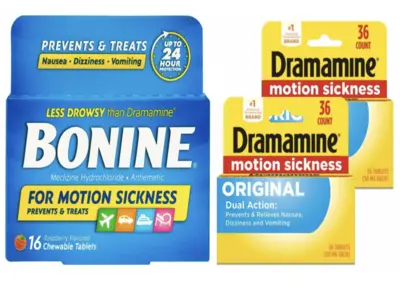
Personally, I’m biased towards using over-the-counter medications.
Medications have been developed over time to prevent feelings of nausea and sickness from the motion on the sea.
They’re easy to get a hold of, and you only have to take one or two pills to start feeling the positive effects.
The two most common brands, Bonine and Dramamine, work by using antihistamines to alleviate symptoms.
I prefer Dramamine, a brand with more options available. It is the older brand of the two, first introduced to the market in 1949.
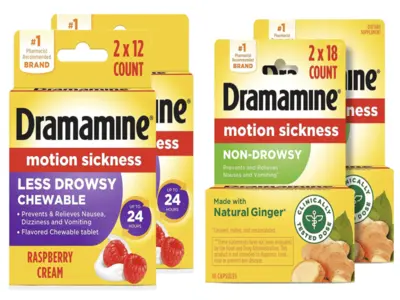
It uses dimenhydrinate, an antihistamine which has a side effect of drowsiness.
Drowsiness could be a benefit or a disadvantage, depending on what time you prefer to take the pills.
If you take it at night, it could help you sleep through any intense rocking of the boat. But if you have to take it at a different time of day, the pill could put you to sleep and make you miss key events on the cruise.
Personally, I’ve never experienced drowsiness from Dramamine—either due to the excitement of a cruise, or the fact that I’m a heavy coffee drinker.
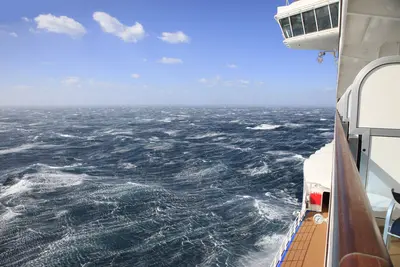
They also sell non-drowsy pills, which include more ginger and make for a more natural option. However, these versions can be less effective.
Just to be safe, I took two Dramamine pills before bedtime, ensuring that they would kick in by the time I woke up on Day 2.
The ship docked at Nassau for most of the day, but I stayed on board and wanted to be sure I wouldn’t feel seasick when we started moving again.
Sure enough, once we started moving, I didn’t feel seasick at all! I would rate my sickness at a 0/10.
My rating: ★★★★★
Natural ginger remedies

On day 3, I decided to turn to natural remedies for seasickness.
Ginger root is one of the oldest and most famous remedies for seasickness.
Whether in the form of candy, tea, or supplements, many have used it to alleviate nausea for centuries.
I decided to buy a packet of ginger gum for my cruise, and try it on Night 3. By the time I started chewing the gum, our ship had left Perfect Day at CocoCay and was sailing, full-steam ahead, back to Port Canaveral.
I honestly didn’t expect the ginger gum to help much, especially when the boat was moving so quickly.
However, it was more effective than I expected! When I was actively chewing my gum, the ginger brought the nausea down to a 2/10.
If I took a break from chewing, I still felt my seasickness stay low, maybe at a 4/10.

The only thing I didn’t like about this method was the fact that I had to consistently chew the gum to get the best effects. Whenever I wanted to eat or drink, I had to take it out of my mouth and feel just a little more seasick.
In the future, I might try some ginger candies or a tea that I could carry around with me.
My rating: ★★★★☆
The best method overall
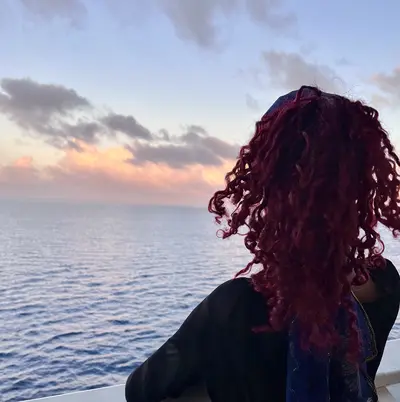
Overall, I would rate over-the-counter medication as the best method for seasickness.
On a cruise, my main struggle has been finding a consistent method. When you struggle with seasickness, you want a remedy that you’ll be able to have on you at all times.
Chewing gum or eating ginger, keeping SeaBands on your wrist, and looking at the horizon are great tools, but you can’t do that for the entire cruise.
Medications are the only thing that you can take once and they remain in your system the entire time.
If you struggle with the side effects of any one medication, I would recommend trying different brands or speaking with your doctor about another suggestion.




